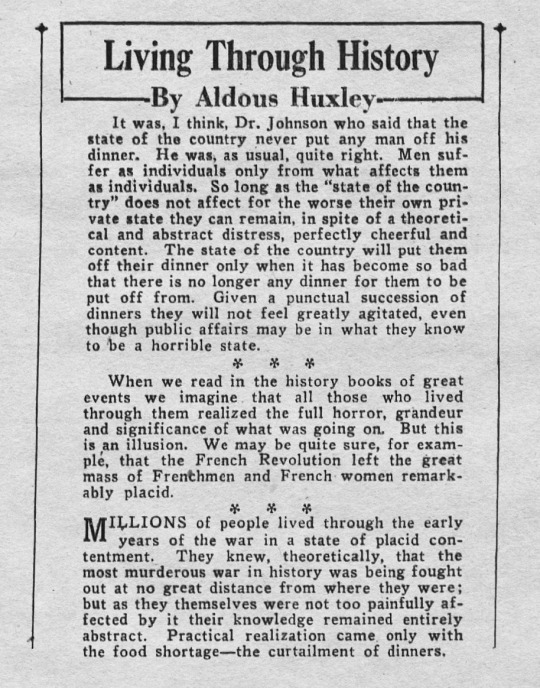Don't wanna be here? Send us removal request.
Text
Turkey vultures. Hands down.
Reasoning: they are turkey vultures.
you can domesticate one animal species of your choosing, which do you pick and why? explain your reasoning
13K notes
·
View notes
Text
I am small and I can't do very much. That is the despair of an individual in a big and violent world. But the plants teach me it is okay to be small. Everything is either small, or made of things that are small. We are all connected. Symbiosis.
So, on the subject of bugs.
It is the fourth summer of the Meadow. My plants grow strong and wild and cover more space than ever before. I have worked to eradicate the invasive lawn grass and carefully curate large clumps of only native species (with a few esteemed naturalized weeds allowed---I have no quarrel with Chicory, it has a positive effect on the ecosystem).
I have tall, huge native Field Thistles, multitudes of tough and aggressive evening primrose, wild strawberry spreading everywhere, a dozen vigorous gray-headed coneflowers, giant clumps of cup-plant, and so many asters and goldenrods that I've had to start targeting them in my weeding.
Yes, yes, I have the showy ones like purple coneflowers and black-eyed susans, but I also encourage and cultivate weird little weeds that are too inconspicuous or ugly to be often planted on purpose. White avens, lanceleaf frogfruit, nettle-leaf vervain.
There are too many plants. I'll spend forever listing them all. What is really interesting, is what's happened with the bugs.
Every year, there has been a much bigger variety and population of insects. I am both seeing many more species, and seeing the same species in much, much larger numbers. Even on the same plants that were already there 4 years ago, I can see way more bugs.
Flower flies, for instance. There are tiny yellow and black flies known as flower flies that are very beneficial for gardeners, because their larvae are predators that attack aphids. It used to be that I could often see a dozen, but now I see hundreds of them every time I go outside!
Or wasps. There are more species of wasps than I possibly could have imagined. It used to be that I would only see the reddish paper wasps, the ones that make big paper nests in the eaves of your house, but now, there are dozens of different wasps. Some are black, others black and white, others black and yellow, others black and brown, and they come in all different sizes. A bunch of blue-black wasps with white stripes live in the log next to my pond.
I identified them and looked up the species, and they had not been studied at all since the 1960's. Supposedly they are solitary species, but several different wasps have made nests inside the log right next to each other. That's the first interesting thing. The second interesting thing is that the nests were first inhabited last summer, and the same species of wasp still lives in them, so their town has been inhabited for multiple years instead of being abandoned when the larvae emerge. Has the next generation taken over the old nests? I am observing something about the species that is not known to science.
Wasps are hated and feared, but my wasps have never been anything but peaceful and polite, and they have so much beauty and importance in the ecosystem.
And the bees! I am observing bees this year that I had never even heard of before. Many of them are so tiny, I doubt they could even reach the nectar in large flowers like purple coneflower. What if the small, inconspicuous flowers are essential for smaller pollinators like the tiny bees? That would make sense. Different flowers evolved to attract different bees.
Beetles, ants, leafhoppers, flies, moths, butterflies, all kinds of bugs. Specific plants attract specific bugs, but it is not the plants individually that restore insect biodiversity, it is the way the plants interact and form a bigger ecosystem.
What I mean is, as my garden grew, the increase in bugs was not linear in relationship to the plants, it was exponential. The combination of the many different plants into an ecosystem attracted many more bugs than would be expected from the sum of each plant individually.
I remember the emptiness and barrenness before. I see it around me when I visit other places. The disappearance of bugs. The insect apocalypse. It's so clear to me now. The cause is biotic homogenization. I call it plant sameness.
Everywhere around me, landscapes have been made into expanses of the same few plants. But when plant sameness is replaced by variety and diversity, many plants interacting in many different ways, everything changes.
1K notes
·
View notes
Text

Aldous Huxley in The San Francisco Examiner, February 18, 1933
2K notes
·
View notes
Text

My mom left an eviction notice for the carpenter bees burrowing into our porch
71K notes
·
View notes
Text
Look. Kitties are awesome. Love the kitties. Some of them are sweet lil things and some of them are Genghis Khan in a fur suit with knives for hands and either way I’m down.
BUT.
You keep those guys the fuck INDOORS.
They’re the only domesticated animal (and I use “domesticated” very lightly, since they’re honestly not, they’ve just decided we’re okay to hang around) that we just let wander around on their own without question.
Dog is loose? Where’s the owner? Where’s the collar? Horse or cow or livestock is loose? You know someone is looking for it (or better be). And most other pets (birds, small animals, etc), if they get lost, it’s generally assumed they won’t survive.
But cats. Cats, man. They fucking thrive. They decimate the local songbird population, often for funsies. And we just put in cat doors and go, “be free!”
STOP IT. Keep your cats indoors. If you can’t, if you feel it’s inhumane to cats, then don’t get a cat. Get a gerbil. (Or rats! Rats are great!)
Again for the people in the back: Keep your cats indoors.
Or I will give you to the kittens.

“Oh well that might be a problem in other places but it’s not relevant to where I live”
YES TF IT IS
723 notes
·
View notes
Text
This feels like the kind of thing that would have shown up in a Terry Pratchett book and I love it


80K notes
·
View notes
Text
what annoys me about explaining evolution to people who don’t think it’s real is that everyone’s idea of how it works seems to be from this

Whereas the reality is far more like

53K notes
·
View notes
Text
ever notice how you can be emotionally mature, self-aware, therapized, journaled-up, and still fall face-first into your own humanity?
like you clock the red flag in real time, you name your inner child’s need, you breathe through the trigger—and then still spiral bc someone took too long to text back or you accidentally caught feelings for a walking trauma response
self-awareness doesn’t save you from feelings. it just lets you watch them unfold like, “ah yes. here comes the emotional devastation. completely understood. totally irrational. unstoppable.”
you can be wise and still messy. evolved and still yearning. a tragic little sea slug of consciousness, floating toward the light and bumping into rocks anyway.
and honestly? that’s kind of beautiful.🪼🫧
2K notes
·
View notes
Text
Conversational skill check: Work acquaintance mentions in an offhand tone with no discernible expression that they have recently lost over 20 pounds. They fail to elaborate. A response is expected.
Me, rolling a 6: …On purpose?
13K notes
·
View notes
Text
53K notes
·
View notes
Text
Ah yes, the yellow pages/white pages
there used to be this giant book that was shipped to everybodies home whiched doxxed everybody in the city
34K notes
·
View notes








